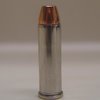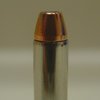I'm in the planning stages of getting into reloading, and am just waiting for my final components to arrive. I was playing around with my case trimmer today to see how to set it up, when I measured a couple of pieces of 9mm brass. They came in at 0.745" on my caliper.
According to the Lyman 49th edition reloading manual, this is already 0.006" too short, and they specifically state not to trim shorter than their trim-to length of 0.751".
I guess I'm a little confused. This seems to mean the brass was already too short when I fired these rounds. If so, what does that mean for my reloading efforts with this brass? Can I reuse these? Or are they unsafe to fire?
It's possible that my caliper isn't accurate, since it's a dial caliper I got at Harbor Freight. Maybe it's time to upgrade?
ETA: Removed other edits. I checked the base of a couple of cases, and they came out to 0.390", which is close to the case spec. So, the caliper can't be off that badly, at least for shorter measurements. Looks like my cases are, indeed, too short.
So... I guess it's back to my questions. Did the manufacturers have cases that were too short? Or did they shorten during firing? (I understand this can happen with straight-walled cases.) Either way, wouldn't that mean they're unsafe?
According to the Lyman 49th edition reloading manual, this is already 0.006" too short, and they specifically state not to trim shorter than their trim-to length of 0.751".
I guess I'm a little confused. This seems to mean the brass was already too short when I fired these rounds. If so, what does that mean for my reloading efforts with this brass? Can I reuse these? Or are they unsafe to fire?
It's possible that my caliper isn't accurate, since it's a dial caliper I got at Harbor Freight. Maybe it's time to upgrade?
ETA: Removed other edits. I checked the base of a couple of cases, and they came out to 0.390", which is close to the case spec. So, the caliper can't be off that badly, at least for shorter measurements. Looks like my cases are, indeed, too short.
So... I guess it's back to my questions. Did the manufacturers have cases that were too short? Or did they shorten during firing? (I understand this can happen with straight-walled cases.) Either way, wouldn't that mean they're unsafe?
Last edited:






